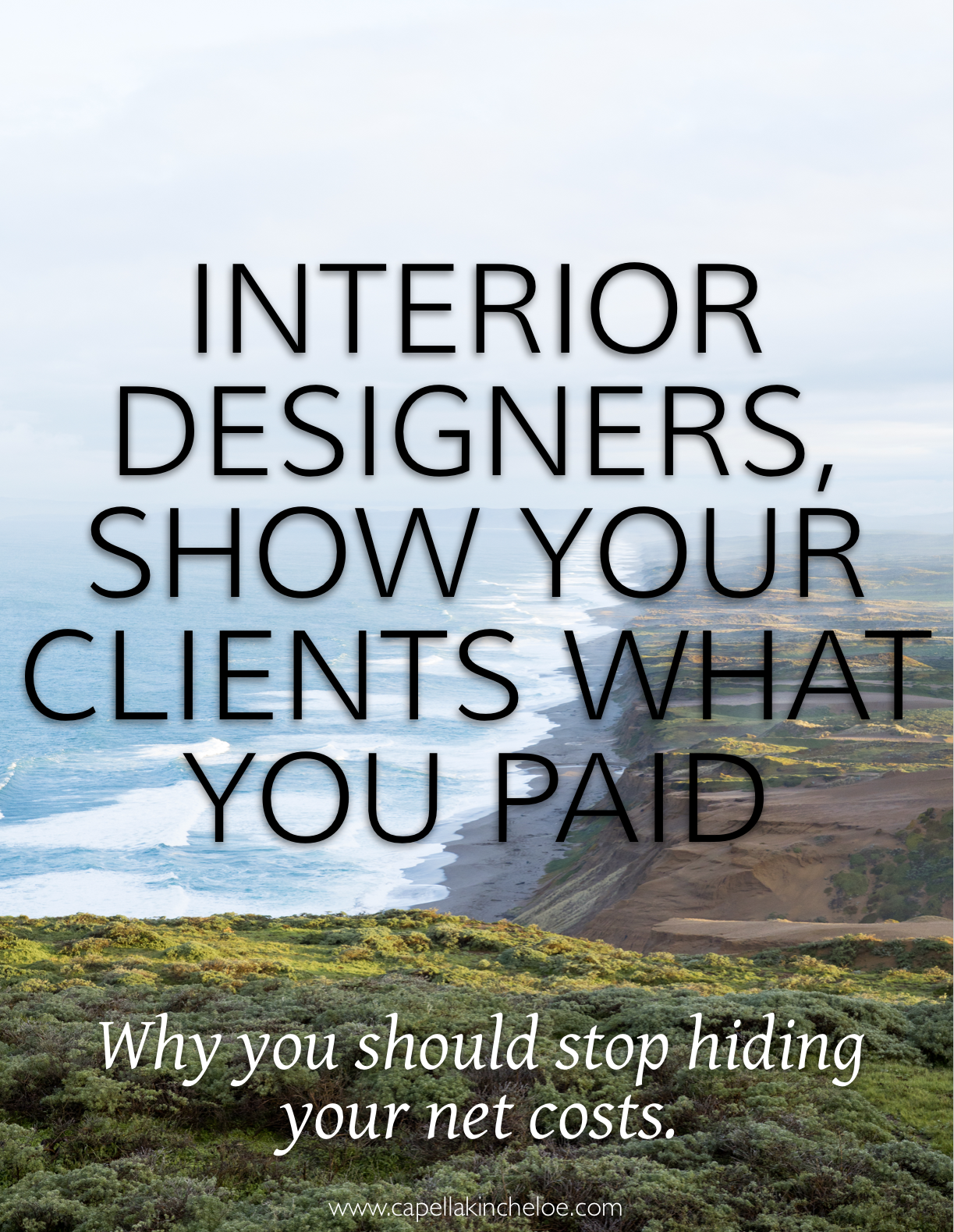Designers, Show Your Clients What You Paid
Radical Transparency
One of the ways that I practice radical transparency is by displaying my purchase cost on the client invoice. This separates the cost of the item from the design fees or markup. By doing this you are clear about the cost of the item and your design fees. I don’t think that lumping them together is good for business anymore. This practice is common, but I think it is becoming harder and harder for the lump-sum designers because clients are checking prices and are savvier than they ever have been. I recently read a post on a Facebook about a designer that had a client that was purchasing fine art. The designer had spent dozens of hours searching for the right pieces and discovering new artists for her client. Then the client contacted the artist to see more pieces and found out the purchase cost of the art. So the purchase price was exposed anyway and the client probably felt a little taken advantage of getting such a high bill from the designer. Despite deserving to get paid for her service the designer probably felt a little “found out” and defensive. But if the designer had separated the two costs – the purchase and the design fee, this wouldn’t have been an issue. There would be no surprise about actual costs.
Interior Design is Not Retail
Here is where an opponent of this type of transparency will say that retail stores buy items at wholesale and sell those items with a markup without having to show the wholesale cost. That shirt may cost $20 when the store buys it and $120 when the customer buys it. But the customer has not hired that store, entered into a relationship with them, and asked them to design and purchase their entire wardrobe. The client is also not paying the retail store any hourly fees.
By hiring a designer, the client has a reasonable expectation that the designer will be on their team; will find them the best items for their home at a good price. The difference is the retail store is not working for the client, but a designer is.
Instead of a retail store, a better analogy would be hiring a personal shopper, who can sometimes get a discount on clothes they buy and sometimes not, but charges their fees separately from the clothes.
What Should You Do?
I think it is time to stop thinking of the markup as a markup in the terms of a retail store and start thinking of the markup as design fees. They are two separate things, the cost of a tangible item and the cost of working with a designer.
The problem with continuing to believe that the client doesn't need (or deserve) to know the designer's cost is that you are battling with transparency. Our world is more transparent than it has ever been because of the internet and especially our social media saturated culture. People are more connected and have information at their fingertips like never before. Because we have become accustomed to this level of (over)sharing, when a designer chooses to perpetuate any opacity in their business, the client will feel distrust and suspicion.
If you have a clear contract there is no reason to hide your purchase cost. Spelling out exactly what the markup percentages are is the right thing to do. You are laying it out for the client to know what to expect in the future. The wrong thing to do is lumping prices together to hide the fact that your markup depends on how much you think the client will pay. Displaying purchase cost can also protect you from insurance headaches by displaying the true cost to replace – both in the item and the designer’s fee.
The two questions I ask when deciding how transparent to be with clients are:
- Would I like if it was done to me?
- Do I feel good about it?
Would love to know what you think, designers do you show clients what your purchase cost is? Clients, do you feel like designers are being dishonest if they don't show the purchase cost?

